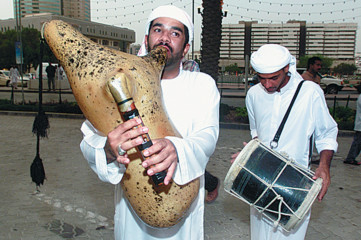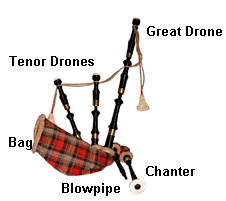how do scottish bagpipes work
This is the bagpipe that is featured in almost every history book that talks about the history of Scotland. Some historians believe that bagpipes originate from ancient Egypt and were brought to Scotland by invading Roman Legions.

What Are My Bagpipes Worth Bagpipe Central
Others maintain that the instrument was brought over the water by the colonising Scots tribes from Ireland.

. In this episode were having a quick think about how the bagpipes work - what are the parts of the instrument a quick disambiguation about the types of bagp. Because of Scottish influences on the sport of curling bagpipes are also the official instrument of the World Curling Federation and are commonly played during a ceremonial procession of teams before major curling championships. The first is to squeeze on the airbag to release air into the system of the.
To produce a melody through the use of the bagpipes the player must do two things simultaneously. Bagpipes are like a lot of other things. Additionally the sound of.
The bagpipes are known as Davids harps in Scotland. Drones are the key to producing the pipes unique sound Scottish pipes have three drones two tenors which play exactly the same note and the bass which plays an octave below. Bagpipes were battle musical instruments.
Irish Bagpipes Everything You Need to Know. It is said that when David slew Goliath the giant the bagpipes soothed the land and were heard by. The bagpipes are largely thought of as being a Scottish phenomenon even though in truth they were widely used across Europe North Africa and South Asia at one time.
But how do they work. Composed mostly by 2 groups of pipes wich are the chanter and drones in most cases. The pressure on the bag.
This is the type of bagpipe that most people are familiar with. Bagpipe players must press down on certain holes while breathing in air to produce their desired melody. The Drone Pipes Bagpipes contain pipes other than just the blow tube.
Bagpipe making was once a craft that produced instruments in many distinctive local and traditional styles. You blow into one called the blowpipe. The bag you see is filled.
The Piob Mhor or the Great Highland Bagpipes. How bagpipes arrived in Scotland is somewhat of a mystery. Trivia - Bagpipes an instrument played throughout the world became a Scottish symbol of pride in the 18th century.
Inside is a little flapper valve that keeps the air from going back out when youre not blowing. There are essentially two different types of bagpipes. A Scottish bagpipe has 5 pipes.
They look amazing they sound great and theyre fun to play. The bagpipes are known as a universal folk. Air passes through the reeds to create the constant sound.
This is due to the fact that the sound waves are able to travel further in the thinner air. First the sound of the bagpipes can carry for a long distance in these settings. The player blows into the aptly to continually fill the bag with air and squeeze it out with their arm whilst playing the chanter.
A musical instrument that is exactly that a bag with pipes. Answer 1 of 2.
Frequently Asked Questions Centennial State Pipes Drums

Buying Your First Set Of Bagpipes J Higgins Ltd

Great Scots How 3 Women Are Shaking Up Tradition In Scotland

Amazon Com Scottish Bagpipes Black Finish With Silver Plain Mounts Highland Bagpipe Free Tutor Book Hard Case Musical Instruments

Famous Scottish Bagpipe Music Vol 1 Compilation By The Scottish Bagpipes Highland Pipes Spotify
/commonwealth-war-graves-commission-commemoration-at-lyness-royal-naval-cemetery-494828255-588fc1863df78caebc38dd78.jpg)
Why Bagpipes Are Played At Funerals

Who Really Invented The Bagpipes Ripley S Believe It Or Not

How Do Bagpipes Work Dive Into The World Of Bagpipes
![]()
Scottish Bagpipes Icon In Outline Style Isolated Vector Image

Top 10 Bagpipe Songs For A Wedding Encore Blog

How Bagpipes Work Making Music Magazine

Forget Scotland Bagpipes Are Originally From The Gulf Arts Culture Gulf News

Difference Between Scottish Bagpipes And Irish Bagpipes Youtube

Bbc Two Phil Cunningham S Pipe Dream How Bagpipes Work

Fun Facts About Scottish Bagpipes Cindy Goes Beyond

What Are The Differences Between Irish Bagpipes And Scottish Bagpipes

